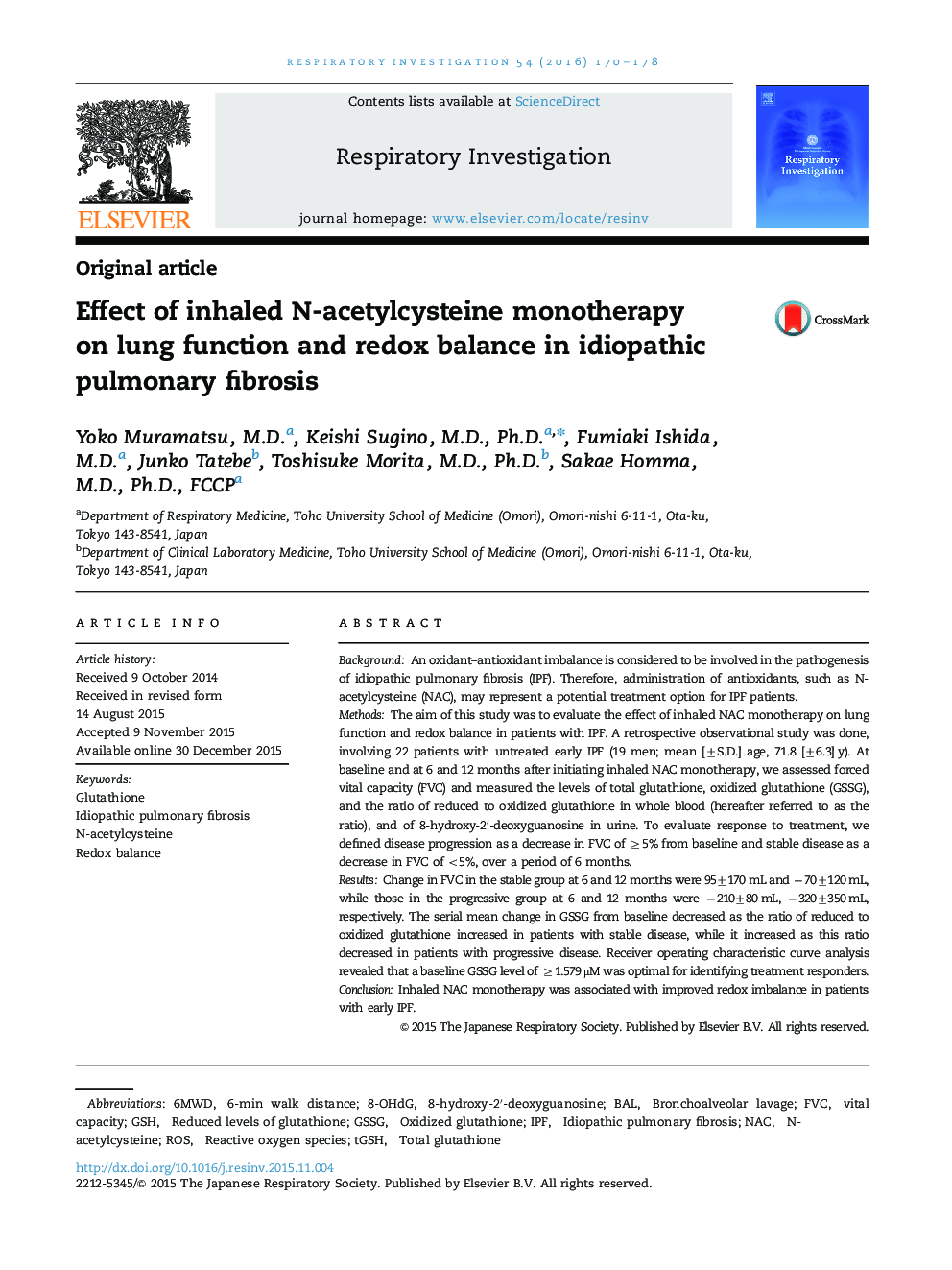| کد مقاله | کد نشریه | سال انتشار | مقاله انگلیسی | نسخه تمام متن |
|---|---|---|---|---|
| 3418565 | 1225744 | 2016 | 9 صفحه PDF | دانلود رایگان |

BackgroundAn oxidant–antioxidant imbalance is considered to be involved in the pathogenesis of idiopathic pulmonary fibrosis (IPF). Therefore, administration of antioxidants, such as N-acetylcysteine (NAC), may represent a potential treatment option for IPF patients.MethodsThe aim of this study was to evaluate the effect of inhaled NAC monotherapy on lung function and redox balance in patients with IPF. A retrospective observational study was done, involving 22 patients with untreated early IPF (19 men; mean [±S.D.] age, 71.8 [±6.3] y). At baseline and at 6 and 12 months after initiating inhaled NAC monotherapy, we assessed forced vital capacity (FVC) and measured the levels of total glutathione, oxidized glutathione (GSSG), and the ratio of reduced to oxidized glutathione in whole blood (hereafter referred to as the ratio), and of 8-hydroxy-2′-deoxyguanosine in urine. To evaluate response to treatment, we defined disease progression as a decrease in FVC of ≥5% from baseline and stable disease as a decrease in FVC of <5%, over a period of 6 months.ResultsChange in FVC in the stable group at 6 and 12 months were 95±170 mL and −70±120 mL, while those in the progressive group at 6 and 12 months were −210±80 mL, −320±350 mL, respectively. The serial mean change in GSSG from baseline decreased as the ratio of reduced to oxidized glutathione increased in patients with stable disease, while it increased as this ratio decreased in patients with progressive disease. Receiver operating characteristic curve analysis revealed that a baseline GSSG level of ≥1.579 μM was optimal for identifying treatment responders.ConclusionInhaled NAC monotherapy was associated with improved redox imbalance in patients with early IPF.
Journal: Respiratory Investigation - Volume 54, Issue 3, May 2016, Pages 170–178